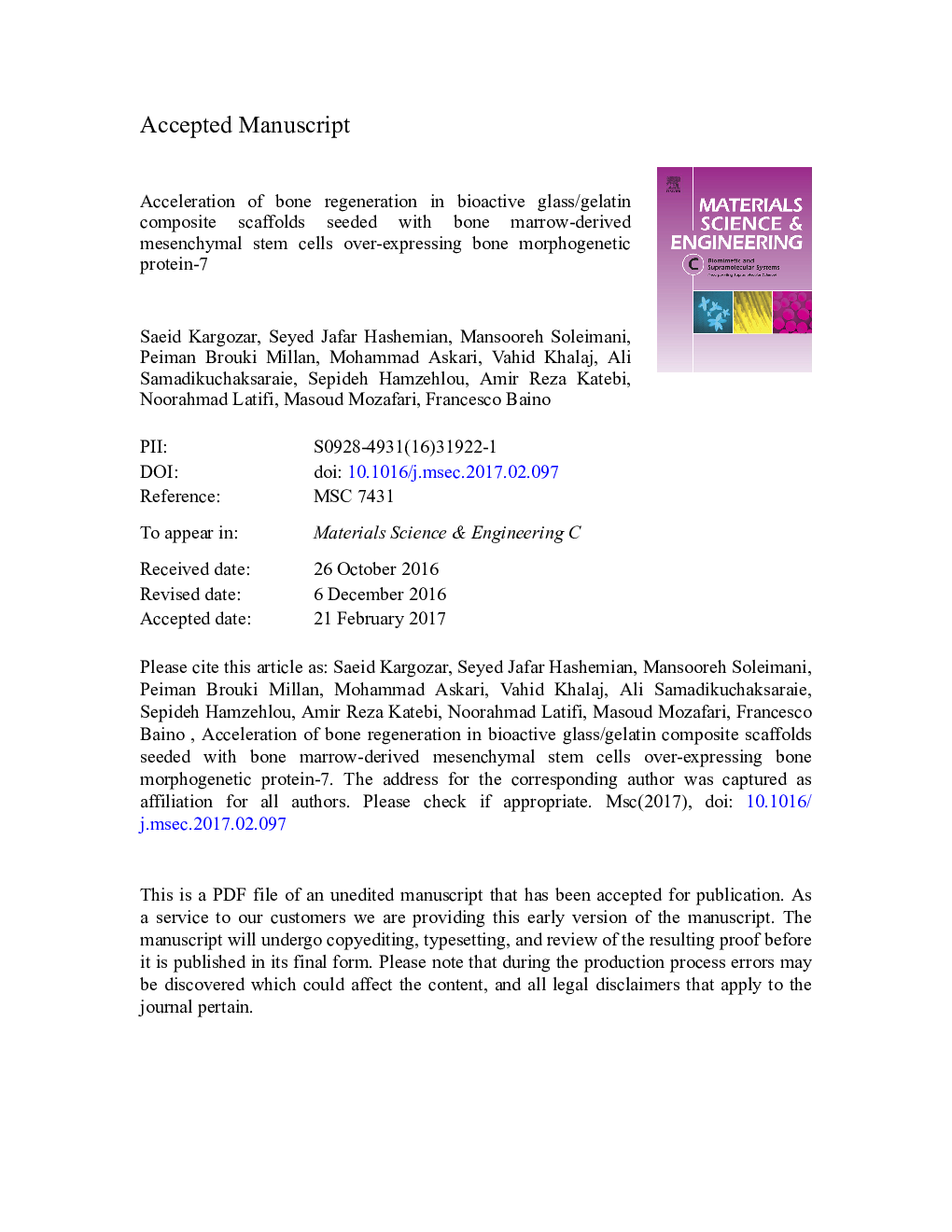| Article ID | Journal | Published Year | Pages | File Type |
|---|---|---|---|---|
| 5434872 | Materials Science and Engineering: C | 2017 | 42 Pages |
Abstract
In this research, the osteoinduction effect of a novel variant of bone morphogenetic protein-7 (BMP-7), delivered through bone marrow mesenchymal stem cells (BM-MSCs) seeded on bioactive glass/gelatin nanocomposite scaffolds, was evaluated in a calvarial critical size defect in rats. After being harvested and characterized in vitro, BM-MSCs were infected by a plasmid vector containing BMP-7 encoding gene enriched with a heparin-binding site (B2BMP-7) to assess its osteogenic effects in vivo. The animals were randomly categorized into three groups receiving the scaffold alone (group I), the scaffold seeded with BM-MSCs (group II), and the scaffold seeded with manipulated BM-MSCs (group III). After 2, 4 and 12 postoperative weeks, the animals were sacrificed and the harvested specimens were analyzed using histological and immunohistochemical staining. The results of in vitro tests (preliminary screening) showed that the synthesized scaffolds were biocompatible constructs supporting cell attachment and expansion. The in vivo results revealed higher osteogenesis in the defects filled with the B2BMP-7 excreting BM-MSCs/scaffolds compared to the other two groups. After 12Â weeks of implantation, fully mature newly formed bone was detected throughout the damaged site, which indicates a synergistic effect of cells, scaffolds and growth factors in the process of tissue regeneration. Therefore, bioactive glass-containing scaffolds pre-seeded with manipulated BM-MSCs exhibit an effective combination to improve osteogenesis in bone defects, and the approach followed in this work could have a significant impact in the development of novel tissue engineering constructs.
Related Topics
Physical Sciences and Engineering
Materials Science
Biomaterials
Authors
Saeid Kargozar, Seyed Jafar Hashemian, Mansooreh Soleimani, Peiman Brouki Milan, Mohammad Askari, Vahid Khalaj, Ali Samadikuchaksaraie, Sepideh Hamzehlou, Amir Reza Katebi, Noorahmad Latifi, Masoud Mozafari, Francesco Baino,
